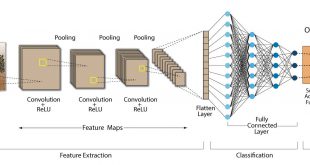Bilişim Enstitüsü, Uydu Haberleşme ve Uzaktan Algılama Programı, İTÜ
A dual-band frequency selective surface design for satellite applications
Esma Mutluer; Mesut Kartal, 2019
Abstract: Studies in the field of satellite communication have shown a great improvement from past to present. Firstly, satellites used in military field were developed and then commercial satellites were used. Satellite systems consist of three main components. These components can be classified as an earth station, ground terminal and satellite. In satellite communication systems, the antenna model which is widely preferred for communication between ground stations and satellites sufficiently is the reflector antennas. In the literature, there are several kinds of reflector antennas, but the reflector antenna types preferred in satellite applications grouped under three as “parabolic antennas”, “cassegrain antennas” and “offset parabolic antennas”. The most important advantages of using parabolic antennas are directing the radio wave with a narrow beam or allowing the waves to be received only at a certain angle. Reflector antennas are included of two parts; feeding and reflector. The feed part constitutes the electromagnetic wave source and the reflector part provides the antenna gain. Recent frequency selective surfaces in the reflector antenna designs, placed in two different ways which are between two feed points or behind a feed point. Frequency selective surfaces are structures that show transmission and reflection characteristics according to desired frequency. Frequency selective surfaces can be designed with multiple frequency characteristics, but also the frequency range of the designed frequency selective surfaces can be determined according to need. Because of these reasons, rapid developments in satellite technologies and the change of communication infrastructure over time increase the need for frequency selective surfaces. Moreover, studies on the design of these structures have been increased in order to reduce the number of reflectors in the satellites, to reduce the mass of the satellite and finally to reduce the cost. In this thesis, Ku band (14.1-16 GHz), Ka band (29.2-36.8 GHz) and X band (8- 12 GHz) which are commonly used in satellite communication applications. In this thesis, three different frequency selective surfaces with suitable band stop characteristics are designed by selecting the target frequencies. Analysis, optimization and design studies are performed using the Ansoft HFSS program. Analysis results are evaluated by using parameters S11 (reflection coefficient) and S21 (transmission coefficient). In the first design, a frequency selective surface structure design with band stop characteristic is performed in more than one resonance frequency of the Ka band for simplicity. To create this structure with more than one resonance frequency, a new FSS structure is formed by combining two different hybrid geometry structures in a single layer. When the results of the first structure with band stop geometry were evaluated, it is observed that the transmission coefficient is at least -20 dB at two central resonance frequency (26.5 GHz and 43.5 GHz) up to 60 degree of incidence angle. In the second part of this study, a multi-band frequency selective surface design is performed in the Ka band (38.8 GHz-41.1 GHz) and X band (8 GHz-12 GHz). At second design, we designed different geometries in different unit cells for Ka band and X band. Finally, these structures was combined in a single cell at a multi-frequency frequency selective surface. Results show that the Ka band, one of the stop bands in the TE (transverse electricity) and TM (transverse magnetic) modes, has shown an approximate of 2 GHz shift in both modes. The reason for this shift, is continuity of the geometry structure designed for the X band, in comparison with the miniaturized components of the structure designed for Ka band. The transmission coefficient of this structure is approximately -40 dB for X band and approximately -23 dB for Ka band. When the result is evaluated, the proposed second structure has a small size structure, two operating bands independently from each other and high selectivity. This designed frequency selective surface is proposed for use in a sub-reflector structure in reflector antennas. In the final stage of this study, a dual band frequency selective surface design which can be used as a sub-reflector in the reflector antennas for satellite applications is performed in Ku (14.1 GHz-16 GHz) and Ka (29.2 GHz-36.8 GHz) band. In this design, a four-arm structure in the center is designed to reflect the Ku band signals. At the same time, in order to reflect the Ka band signal, two-legged structures are placed on the corners and four-legged structures are placed on each quadrant. To find the most ideal measurements of the geometric structures, the most preferred equivalent circuit model is used in the literature. In this FSS design, both S11 and S21 parameter values are observed. It is observed that for TE polarization the parameter S21 is at least -25 dB in the Ku band from 0 to 60 degrees, and a minimum in the Ka band is -20 dB. In TM mode, the transmission coefficient in both Ka and Ku bands is below -20 dB. This FSS structure has a small size and miniaturized structure considering the cell size. At the same time, it is understood that this structure has high selectivity when the parameters S11 and S21 are evaluated. Totally three different designs are created in this thesis. All of these three designs are presented at international conferences.

Tez No: 540790
 CSCRS İTÜ – Center for Satellite Communications and Remote Sensing
CSCRS İTÜ – Center for Satellite Communications and Remote Sensing 